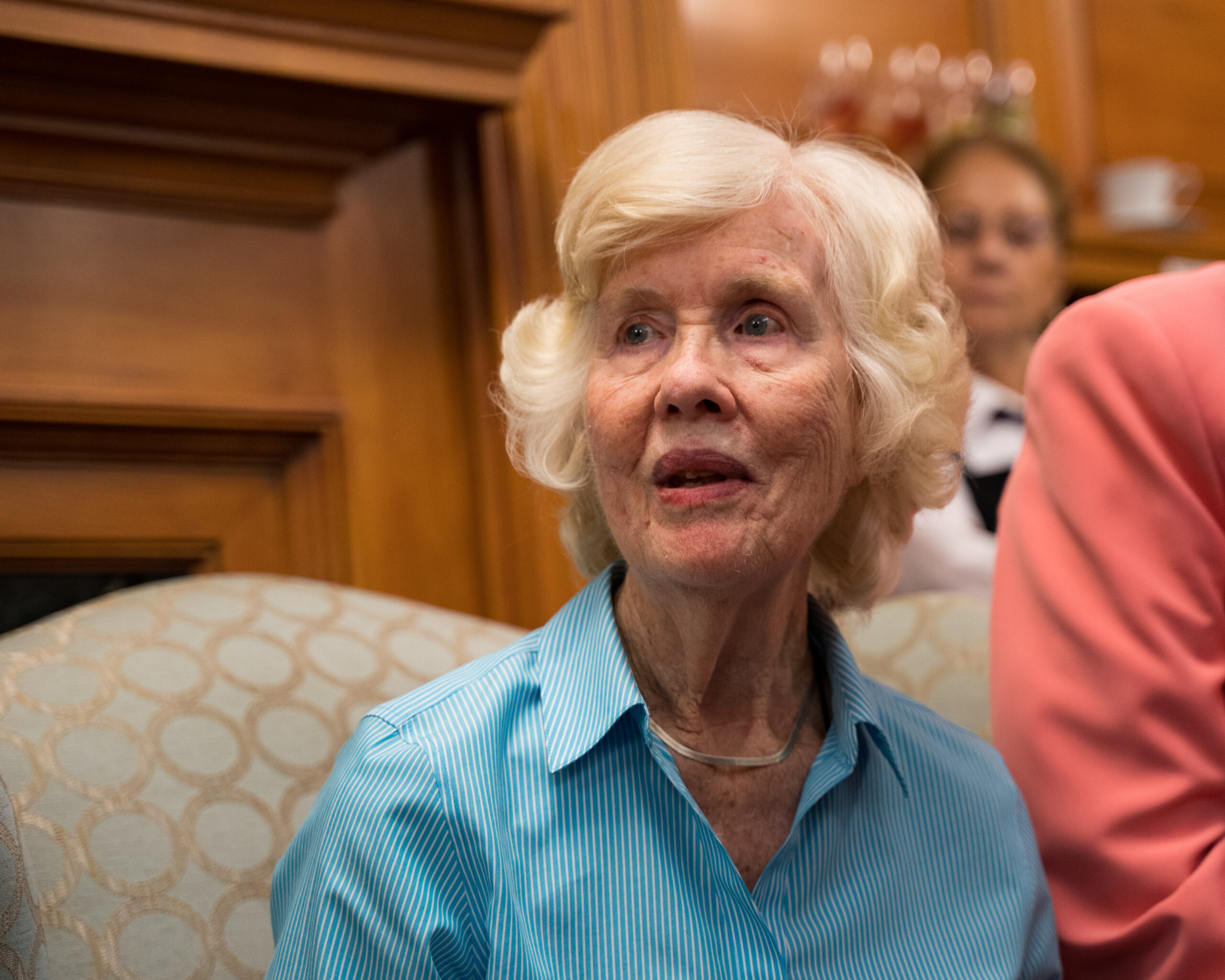June 11, 2017
Presented by Marilynn Hill. Life Co-Chair of the Bronxville Historical Conservancy
On behalf of the Bronxville Historical Conservancy, I would like to welcome all of you to this special event honoring our dear Mary Huber.

Mary was born with a love of history into a family that shared that passion. Her father was an authority on American and English history and antiques, and owned a shop that specialized in vintage coins and stamps in Woodbridge, Connecticut, where Mary was raised. Her mother was a registered nurse.
After receiving her B.A. in Art History from Wheaton College, Mary was selected as a fellow in the University of Delaware’s Henry F. Dupont Winterthur museum program, earning an M.A. in American Studies in 1956. She also worked in the literature department of the Sterling Memorial Library of Yale University. She then went on to work as an assistant to Joseph Butler, who was curator of the Sleepy Hollow Restorations that later became Historic Hudson Valley. This gave Mary the opportunity to work in all three of the historic homes of that consortium.
After marrying Charles Clark Huber, the couple moved into the Bronxville area, spending about nine years in Lawrence Park before moving into the village proper, where Mary has lived for the remainder of her almost 60 years. Mary and Charlie raised their three children here — Betsy, Ann and John.
Once a resident of the village, Mary served on the board of the public library and, along with Jean Bartlett, was instrumental in setting up the first Local History Room. In 1987, she replaced Jean as Village Historian and held that position for twelve years until 1999. One of her early projects as Village Historian was to reinvigorate an oral history project taping reminiscences of longtime and former residents, as well as school and village officials.
Another project that she and Jean Bartlett had dreamed about and had begun to work with village officials and real estate offices to initiate was to record information about the historic houses in the community. That research eventually expanded to other buildings and involved collecting data on all the past owners, architects, and builders This early germ of an idea was finally brought to full fruition with the book that was published during the village centennial — Building A Suburban Village — for which Mary was not only a consulting advisor from its early stages but also a contributing author and editor.
At the same time in the 1970s that Mary was working on Bronxville’s history, she became involved with the Bartow-Pell Mansion Museum in Pelham Bay Park. There she served for more than 30 years as curator, and now is honored as curator emeriti.
In 1999, Mary retired as Village Historian but continued her commitment to our history by being a founding member and on the board of the newly established Bronxville Historical Conservancy. However, lest you think that in her six decades Mary only delved in history and preservation, in addition to all the time she was giving to the community in that area, she also found time to serve as a member and president of the Bronxville League for Service, was a deacon of the Reformed Church, was a many-year member of the Daughters of the American Revolution, and, as mentioned earlier, was on the board of the public library. Not surprisingly, in tribute for all of her dedication to the community, Mary was given the Rotary Club’s annual service award in 1997.
Mary may have been the first person to introduce me to the Masterton family history when I moved here in the 1970s. Her first decade in Bronxville was the same as Masterton granddaughter Miss Amie Dusenberry’s last, but briefly crossing paths with that family made an indelible imprint on Mary. She became a great student as well as raconteur of that family’s history. We sat next to each other in 1986 when all of the treasures of that house were sold at auction and, sadly, with only a few days’ advance notice, most of the significant items left the community. We tried to save a number of things for the village, but without a historical society or our Conservancy, we didn’t have the collective resources to keep its most notable treasures. The indomitable Mary did not let that stop her, and because of her dedication, we can continue to enjoy some of our special Masterton history. But before Jayne Warman informs us about that history, I’d like to quote a line from a letter sent by a former Educational Director at Bartow-Pell: “I congratulate Mary on her many years of keeping history alive and wish her many more happy years of good health and the joy of knowing that she has left a wonderful legacy for others to emulate.” I think we can all join in that special wish.